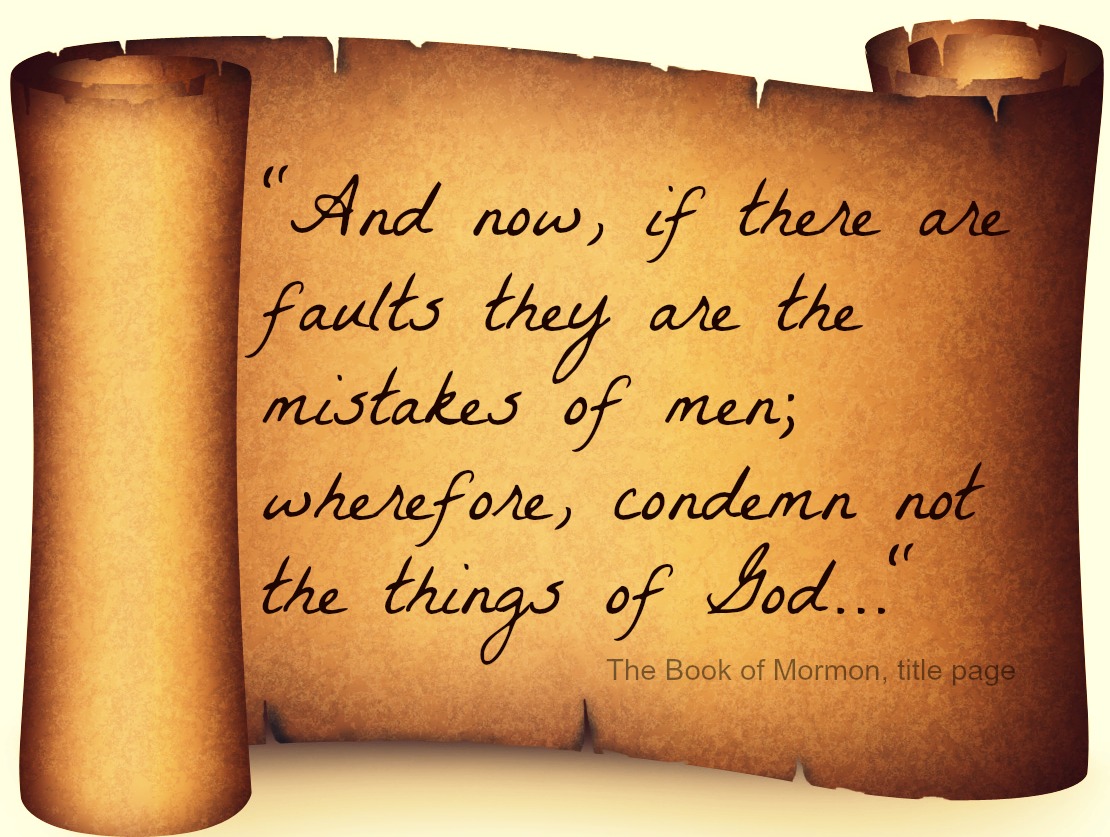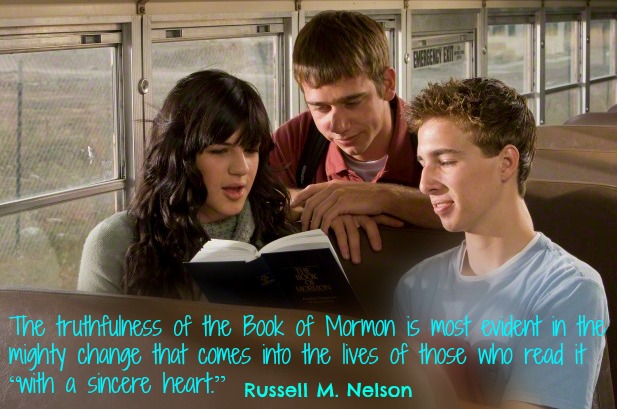The Book of Mormon—another testament of Jesus Christ and a companion scripture to the Bible—is probably the most read scriptural text for members of The Church of Jesus Christ of Latter-day Saints, who are sometimes called Mormons because of their belief in this book. Few—if any—people have studied this scriptural work more in-depth than Royal Skousen, a professor of linguistics and English language at Brigham Young University and editor of the Book of Mormon Critical Text Project, which began in 1988. [1]
 A critical text project is an attempt to reconstruct the original text as closely as possible, omitting errors made as the text was transcribed, copied and printed, through scholarly research. Skousen devoted 25 years to finding the original English language text of the Book of Mormon, and his findings are fascinating. He has published the results of his study in numerous articles and several volumes as well as a book. He also presented his findings in three illustrated lectures at Brigham Young University earlier this year, and the videos are available on YouTube. The series is aptly titled “25 Years of Research: What We Have Learned about the Book of Mormon Text.” [1]
A critical text project is an attempt to reconstruct the original text as closely as possible, omitting errors made as the text was transcribed, copied and printed, through scholarly research. Skousen devoted 25 years to finding the original English language text of the Book of Mormon, and his findings are fascinating. He has published the results of his study in numerous articles and several volumes as well as a book. He also presented his findings in three illustrated lectures at Brigham Young University earlier this year, and the videos are available on YouTube. The series is aptly titled “25 Years of Research: What We Have Learned about the Book of Mormon Text.” [1]
For his critical text project, Skousen studied each stage of the transmission process for accidental changes and changes due to editing. An ancient Book of Mormon prophet wrote, “And now, if there are faults, they are the mistakes of men; wherefore, condemn not the things of God” (Title Page). Skousen’s findings support this; whatever mistakes have crept in, the things of God are unchanged.
The Translation of the Book of Mormon
As a linguist, Skousen’s research focused on the original English language text as translated by Joseph Smith, the founding prophet of The Church of Jesus Christ in modern days. As stated in the Introduction, the Book of Mormon is a compilation of records kept by prophets in the ancient Americas. Mormon, a prophet-historian, abridged their writings onto gold plates. He then handed them to his son Moroni, who finished the work and then hid the plates in the Hill Cumorah.
On September 21, 1823, the same Moroni, then a glorified, resurrected being, appeared to the Prophet Joseph Smith and instructed him relative to the ancient record and its destined translation into the English language. In due course the plates were delivered to Joseph Smith, who translated them by the gift and power of God.
Before he was allowed by God to chose 3 and then 8 witnesses, Joseph Smith was instructed not to show the gold plates to anyone, not even his wife. His wife, Emma—who never saw the plates uncovered— said:
The plates often lay on the table without any attempt at concealment, wrapped in a small linen tablecloth, which I had given him to fold them in. I once felt of the plates as they thus lay on the table, tracing their outline and shape. They seemed to be pliable like thick paper, and would rustle with a metallic sound when the edges were moved by the thumb, as one does sometimes thumb the edges of a book. (“Last Testimony of Sister Emma,” Saints’ Herald, 1 Oct. 1879, p. 290; spelling modernized.)
Skousen’s study begins with the Prophet Joseph translating the gold plates from reformed Egyptian (Mormon 9:32) into the English language. Joseph Smith translated the writings using instruments called seer stones. Skousen said that while we don’t know exactly how the instrument worked, we do know a little from witness accounts. The Joseph Smith Papers Project, an effort to gather and publish all existing Joseph Smith documents, has compiled the following details from scriptural and historic accounts:
Buried with the plates were “two stones in silver bows,” which fastened to a breastplate and were later referred to by the biblical term Urim and Thummim. [Joseph Smith] was instructed to use these stones “for the purpose of translating the book.” As he translated, [Joseph Smith] dictated to scribes. Emma Smith recalled that [Joseph Smith] used the Urim and Thummim for the first part of the translation and another seer stone for the remaining portion. Other accounts reported that [Joseph Smith] translated by looking at the stone or stones, which he placed in a hat to reduce exterior light.
The purpose of Skousen’s work was to uncover the original text as Joseph Smith saw it through the seer stones.
‘The Original and Printer’s Manuscript’
Skousen’s first task was to find the handwritten manuscript that the Prophet Joseph dictated to his scribe. There are two handwritten copies of the Book of Mormon: the original manuscript and the printer’s manuscript. The original manuscript is the one written by Joseph Smith’s scribe as he translated. The printer’s manuscript is a copy of the original manuscript used by the printer to set the type for the 1830 edition of the Book of Mormon. The printer’s manuscript is virtually intact and is owned by the Reorganized Church of Jesus Christ of Latter-day Saints, which is now called the Community of Christ. The original manuscript is in fragments, some of which are privately owned. Skousen has been able to examine both. [2]
In 1841, the Prophet Joseph placed the original manuscript in the cornerstone of the Nauvoo House—a boarding house that was never completed. [3] Skousen said:
In 1882, when Lewis Bidamon (Emma Smith’s second husband) opened the cornerstone, he discovered that the original manuscript was mostly destroyed by water. Bidamon handed out the better-preserved portions of the manuscript but apparently kept for himself some smaller fragments. [2]
The Church of Jesus Christ owns much of what Bidamon handed out, which is about 25% of the original manuscript. Some of the smaller fragments that Lewis Bidamon had kept were traced to the family of Wilford Wood— who bought them in 1937 from the Bidamon family— in Bountiful, Utah. As part of his work, Skousen was able to see the fragments and have them conserved and photographed. When Skousen obtained them, the fragments were stuck together in a lump measuring about 1 by 2 by 6 inches. The unraveling “was extremely exciting work,” Skousen said. The fragments were photographed using black-and-white reflective techniques, which revealed the very faint handwriting. They were also encapsulated before being returned to the Wood family. [2] Skousen said that in all, only 28% of the original manuscript has been found.
Skousen’s Findings
Professor Skousen’s 25 years of research have uncovered a wealth of information about the Book of Mormon text. Describing his work, he wrote:
…Right from the beginning, I discovered errors that had crept into the text as Oliver Cowdery and the other scribes produced the printer’s manuscript from the original manuscript. In fact, there were errors in the original manuscript itself. … Yet at the same time, I began to see considerable evidence for the traditional interpretation that witnesses of the translation process claimed: (a) the text was orally dictated, word for word; (b) Book of Mormon names were frequently spelled out the first time they occurred in the text, thus indicating that Joseph Smith could see the spelling of the names; and (c) during dictation there was no rewriting of the text except to correct errors in taking down the dictation. [4]
Skousen also found that “the original text is much more consistent and systematic in phraseology and vocabulary than has ever been realized.” And “sometimes passages of text are the same, word for word, even though they are found incompletely different parts of the book.” [4]
The research does not end with the original and printer’s manuscripts. Skousen has combed, word for word, each of the 20 printed editions of the Book of Mormon since the initial production in 1830. Through his efforts, he has found only minor errors. The doctrines are unchanged. His 25 years of study have produced impressive results, and his findings show the human side of the Book of Mormon text.
A Testimony of the Book of Mormon
Professor Skousen writes that his testimony of the Book of Mormon is independent of his work on the Critical Text project. He wrote:
The Book of Mormon stands on its own and is ultimately not dependent on how that text may vary in printed editions or in the manuscripts. Moroni promised that the Lord will give a testimony of the book to the prayerful reader – irrespective of any infelicities and errors in the text (which Moroni recognized could be there, as he himself noted in the last part of the title page of the Book of Mormon). I received my own personal witness of this book long before I ever began work on this project. I have never needed to prove to myself that the text is from the Lord. Nor have errors in the text ever prevented the Spirit from bearing witness that the book is the Lord’s.
… The Lord witnesses the truthfulness of this book irrespective of the minor errors that have crept in. I know of no error that changes any doctrine or the basic account of the text. There is no error, awkward expression, or ungrammaticality in any of the printed editions of the book that will prevent the honest reader from gaining a testimony of the Book of Mormon. [4]
The Prophet Joseph Smith’s testimony can be found in the book’s Introduction:
I told the brethren that the Book of Mormon was the most correct of any book on earth, and the keystone of our religion, and a man would get nearer to God by abiding by its precepts, than by any other book.
Moroni, the ancient American prophet, told honest seekers that they could know the truth of this book for themselves:
When ye shall receive these things, I would exhort you that ye would ask God, the Eternal Father, in the name of Christ, if these things are not true: and if ye shall ask with a sincere heart, with real intent, having faith in Christ, he will manifest the truth of it unto you, by the power of the Holy Ghost. (Moroni 10:4)


Recent Comments